In this photo, Flip Reynolds holds a framed Clark Lake map that he and his wife, Linda, donated to the Community Center recently.
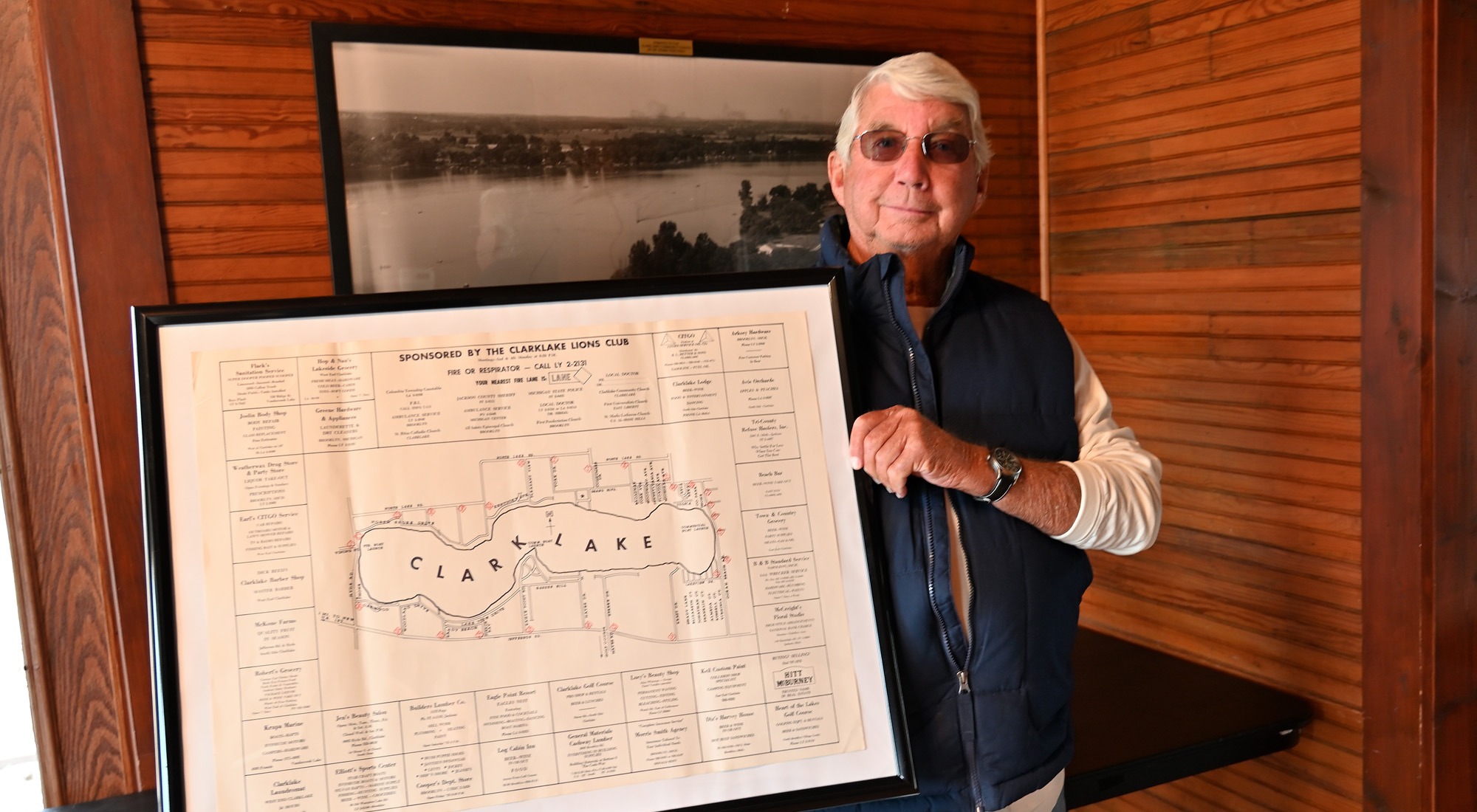
What’s the significance? Preserving Clark Lake’s past. As work progresses at the Community Center, more items like this will be added to the collection. Stay tuned. A copy of this map is also displayed at Doyle’s.
What questions or conclusions come to mind in examining this map? Among other, several differences in the roads emerge from then to now.
The map was published to aid emergency vehicles. The fire department gave each road leading to the lake a letter to eliminate confusion when time mattered. To this day, those fire lane numbers are posted at each location. In some cases, the letter is the primary identifier, such as Q Lane. Did you know that Q Lane is also known as Sparks Drive?

Compare Eagle Point then to Eagle Point now, and see the changes. Next, find Garden Hill. The name appears to have been replaced by Eagle Point Drive. An unnamed road, running parallel to it, no longer exists.

On the North Shore are several fire lanes that also bear road names.
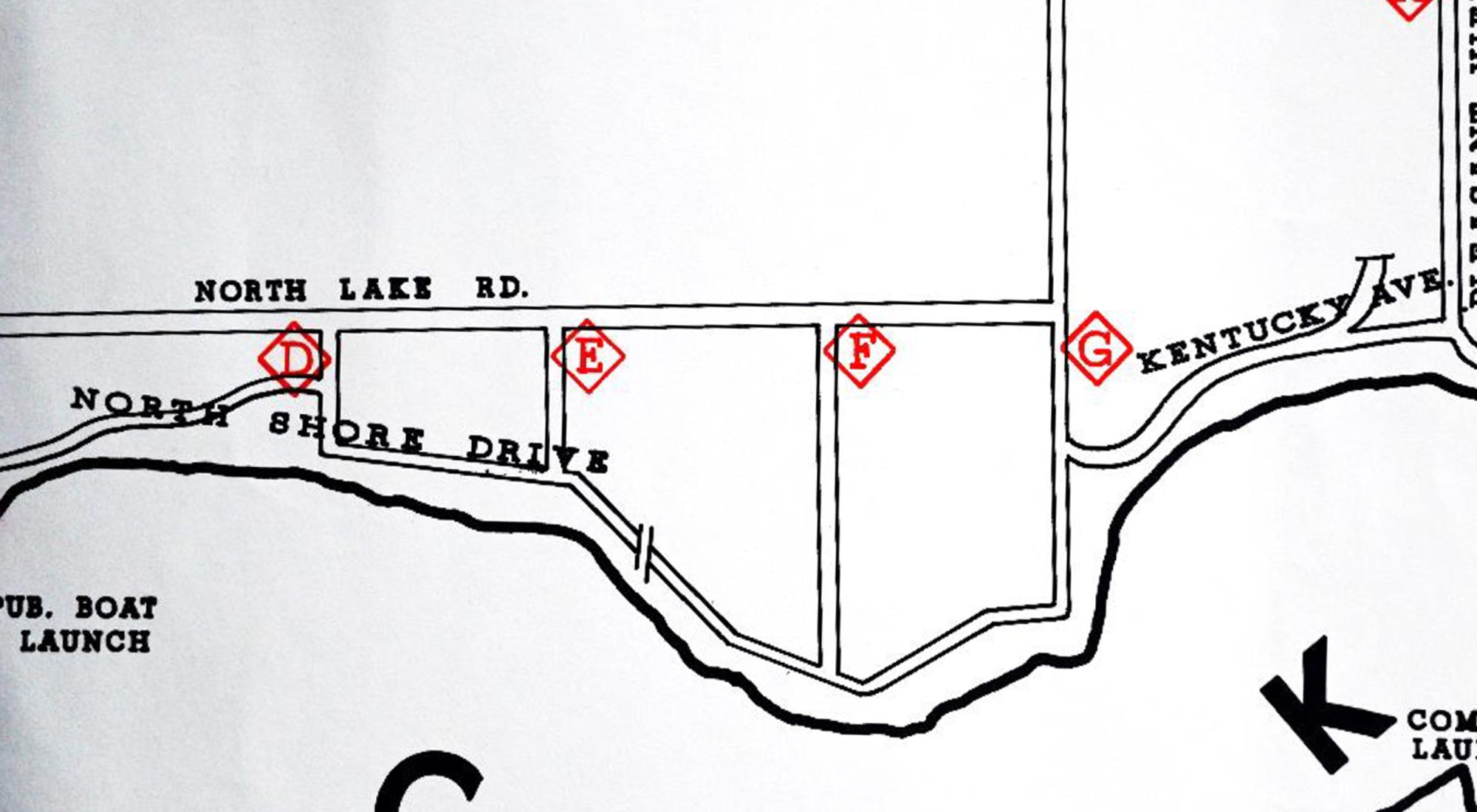
On the North Shore, D Lane is also Terrace Woodland Drive; E Lane, Preston Drive; and G Lane, Kentucky Avenue. Google Maps aren’t always accurate, but you can see these alternate names appear on the Google version below.
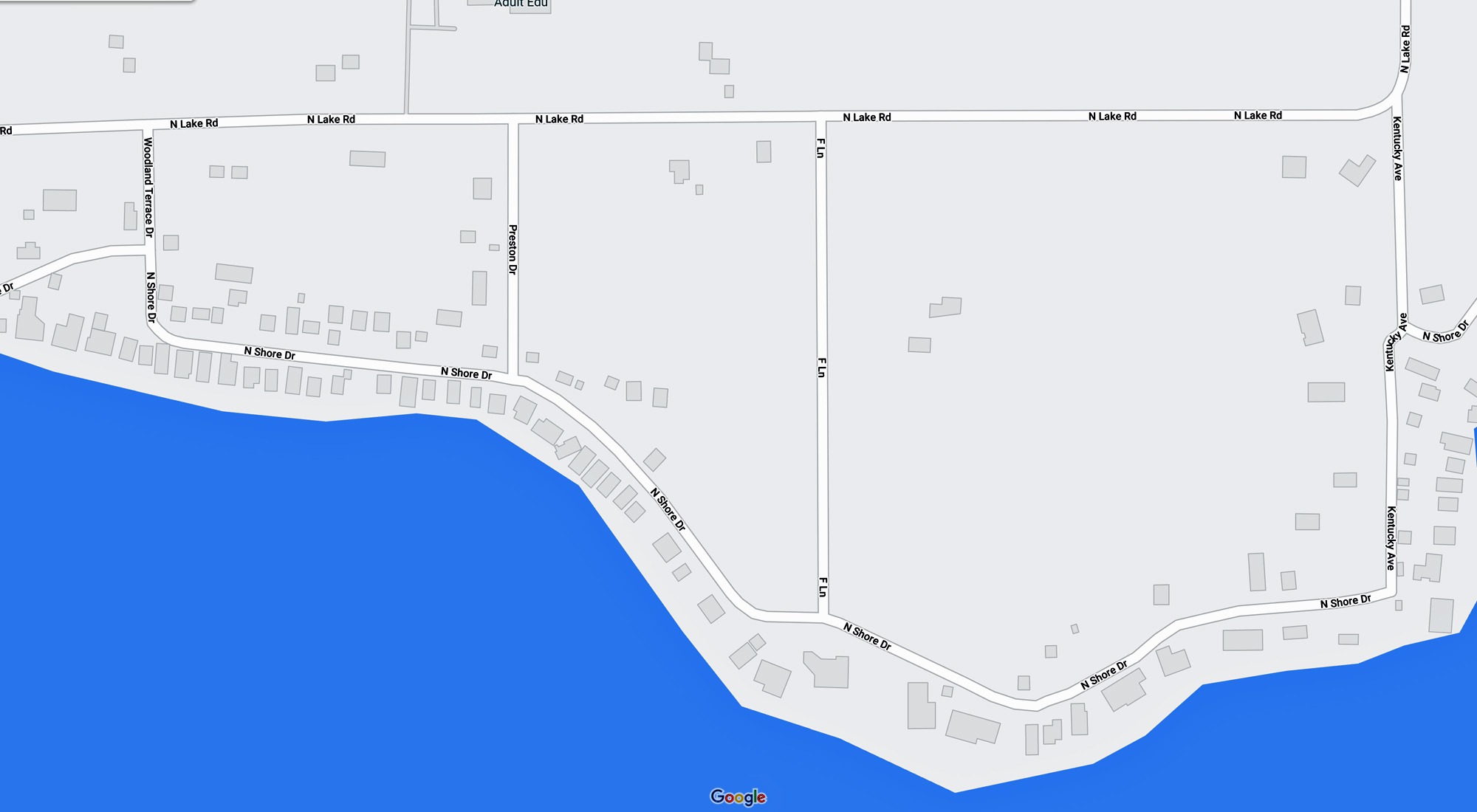
A close examination of the map will show other anomalies.
The Clark Lake Lions Club recognized the value of the lettering system and likely printed the map in mid-60s. The club was founded in 1965. Given the display ads, it’s likely that this project was also a fundraiser. Those ads offer a peak at Clark Lake history, and for some will bring back memories.
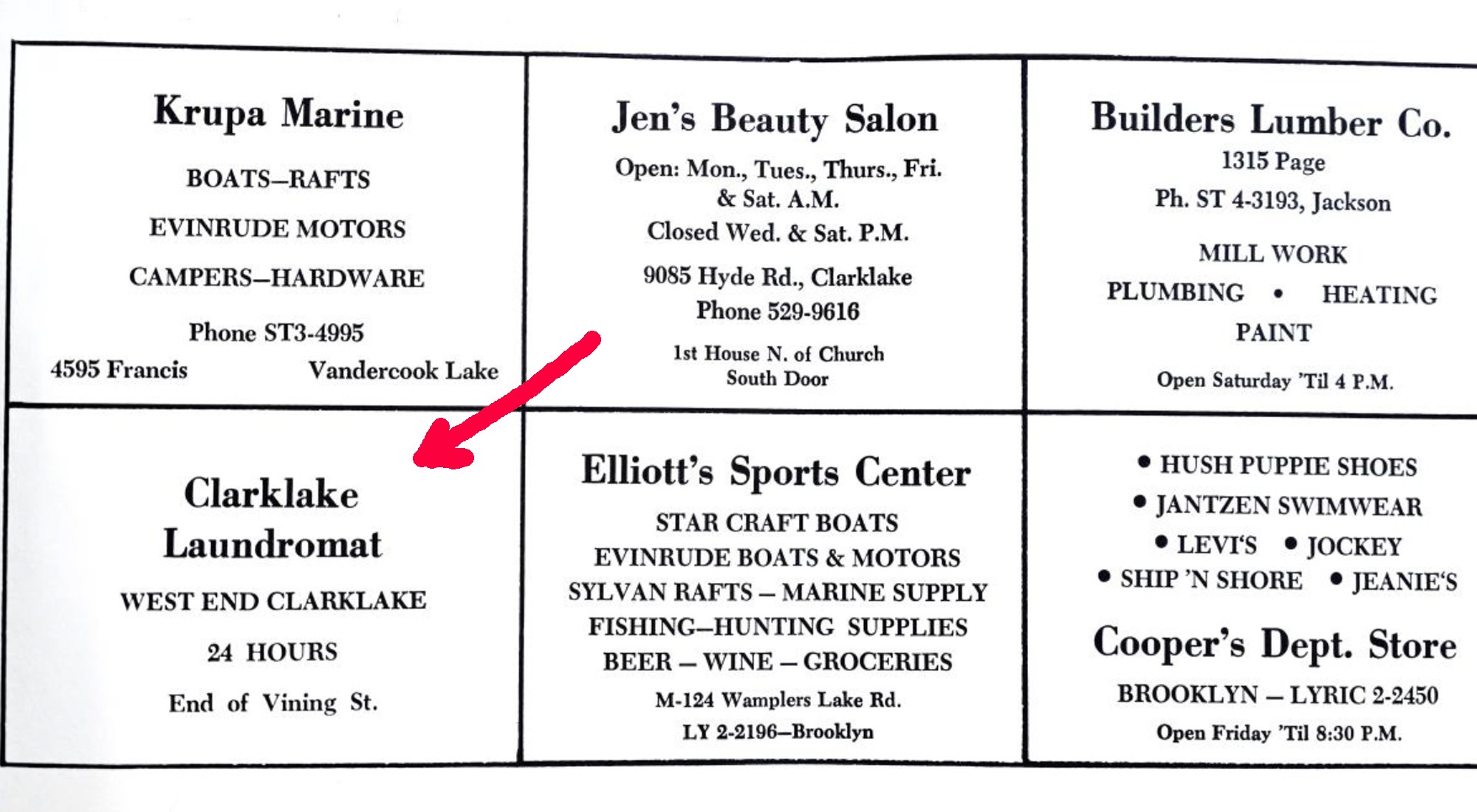
Take the Clarklake Laundromat (lower left). Before washers and dryers were common at the lake, Parrish’s west end laundromat is where you might meet your neighbors as they washed their summer clothes and beach towels. It also met an unexpected end. A undetected gas leak caused an explosion that destroyed the building. Today a house stands where the laundromat once stood. A deja vu occurred In August 2013. The resident notice the natural gas odor. Consumers Energy came to the scene for the repairs.
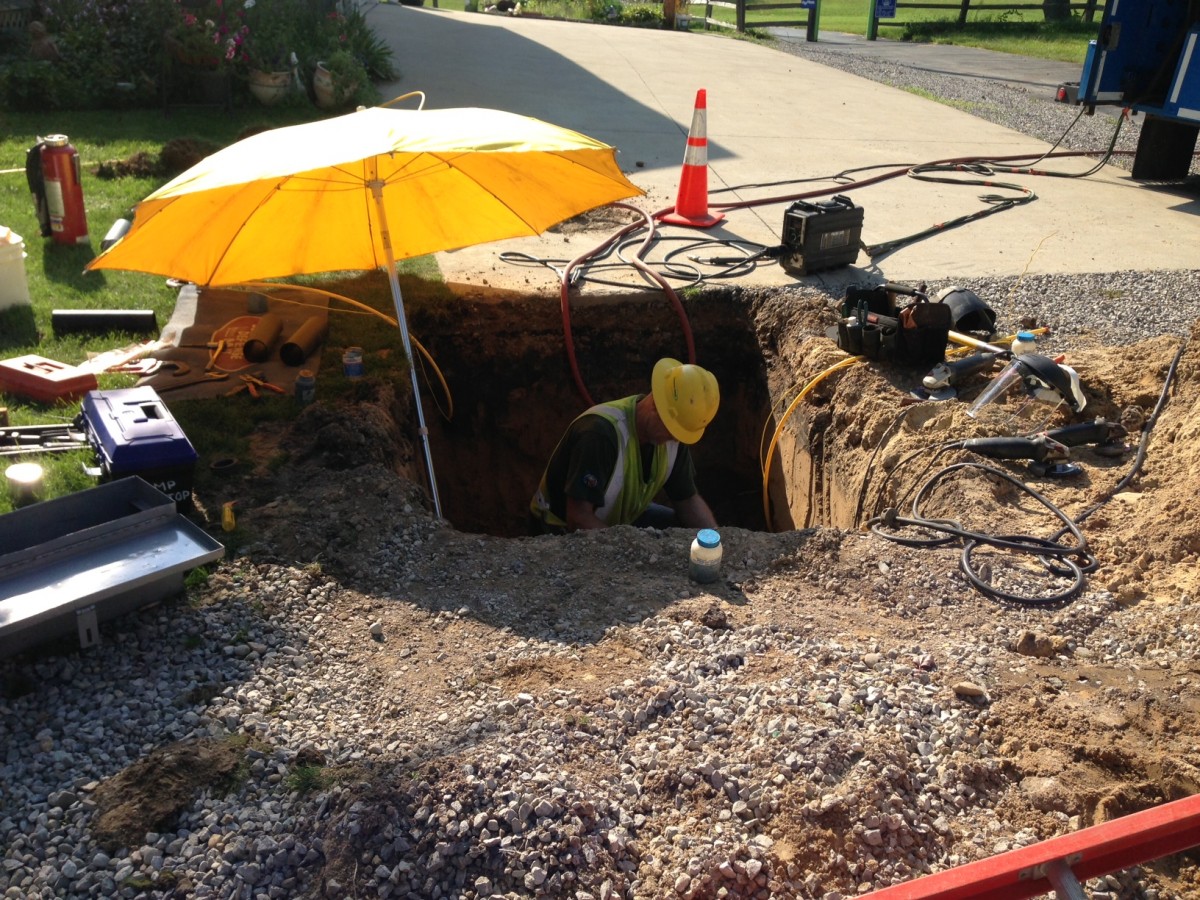
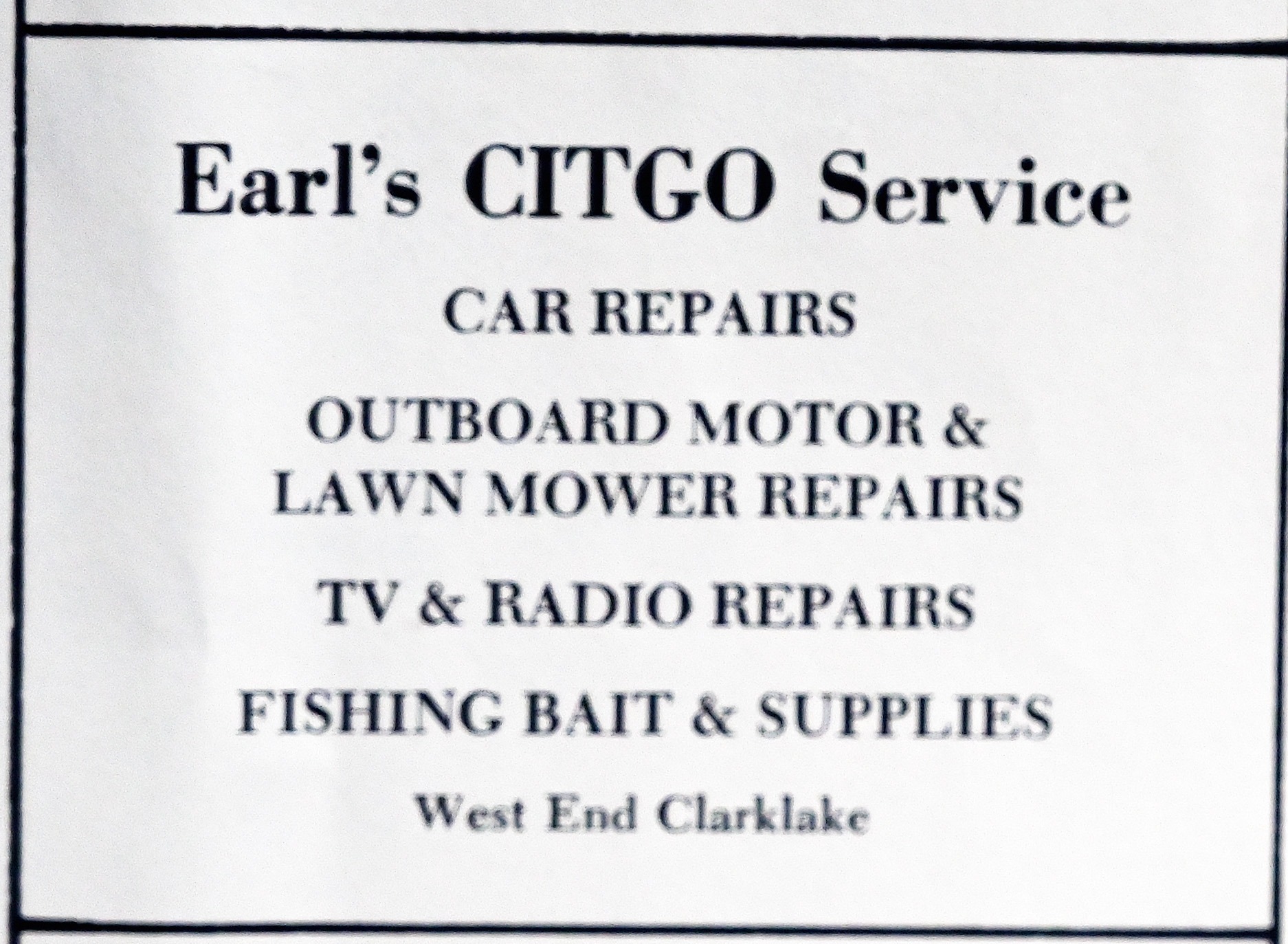
Several options were available when your boat needed gas–drive your car with tank in the trunk to some nearby gas station, buy it from Cal Pittman at his gas dock at Eagle Point, or go the head of the lake. That’s where you tied your boat to the dock, loaded your gas tank into the little red wagon, hauled it across Hyde Road, poured in a quart of oil, and filled the tank with 5 gallons of gas. The price was lower than at the Point, and that encouraged some to take the extra steps. The photo below was taken in 1947 when the gas station was called McCoy’s Service.

The building was later expanded when it housed Your Home Town, a print shop where restaurant placemats are published.
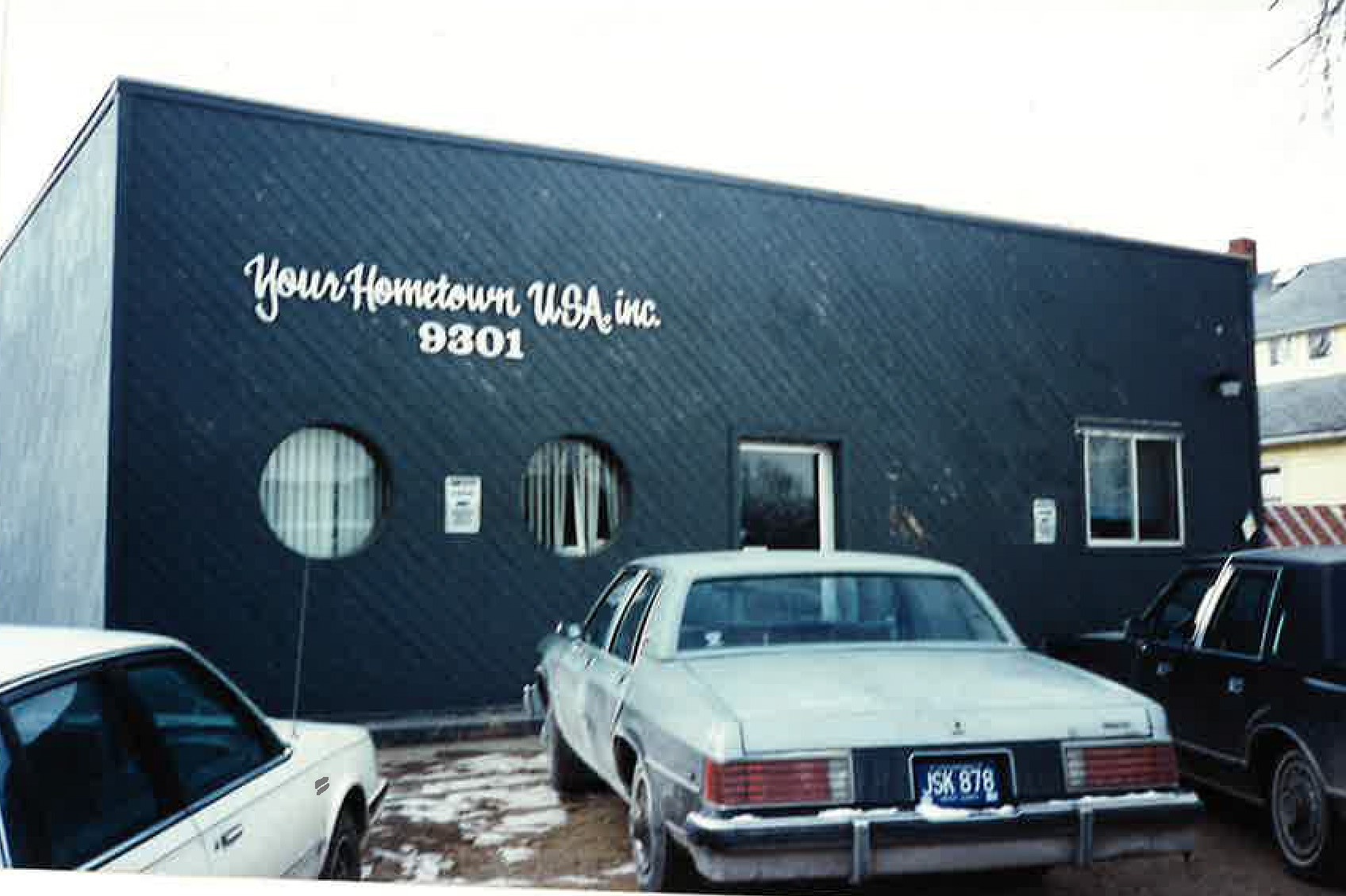
As the business grew, a second story was added to provide more space, as you can see from this present day photo below.
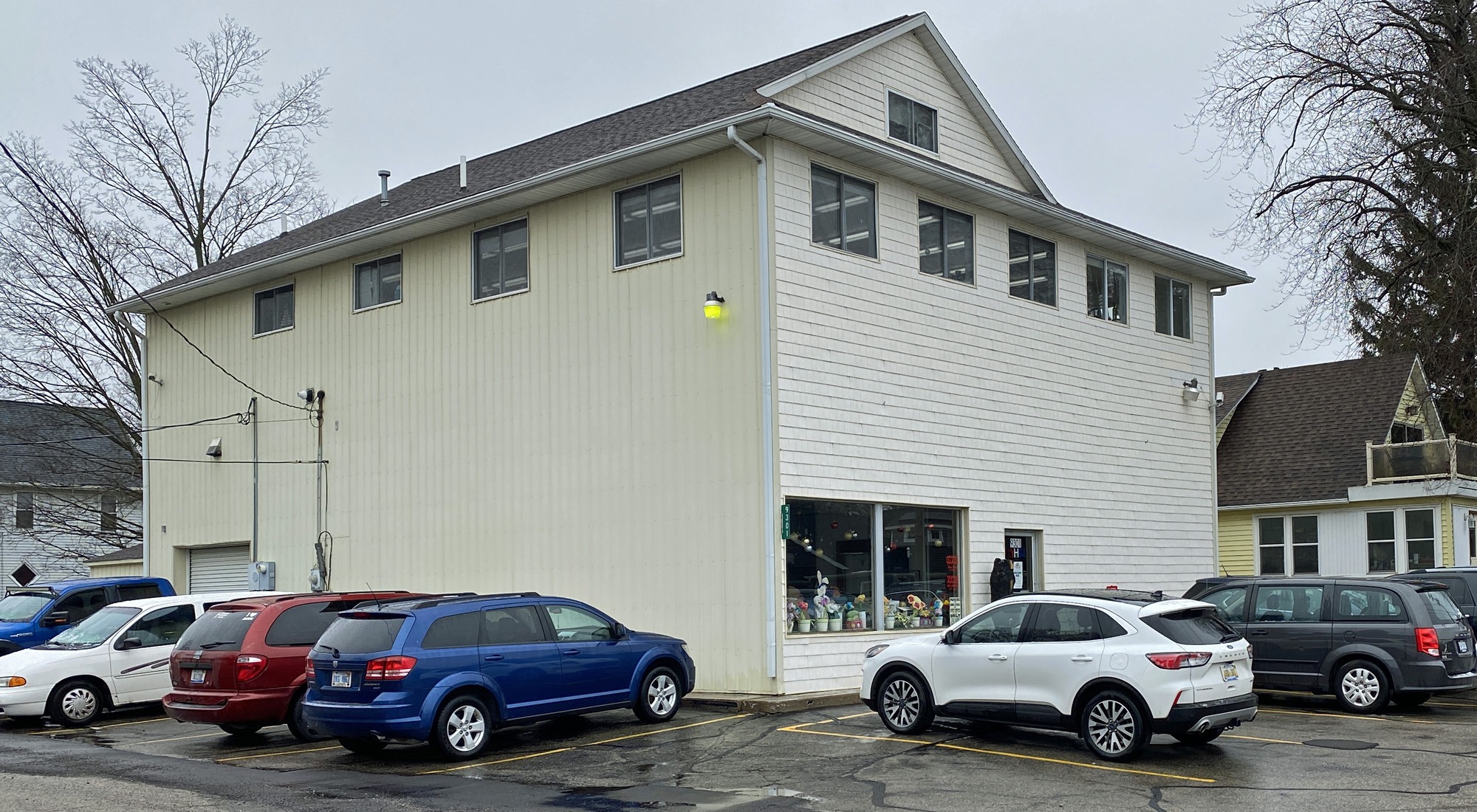
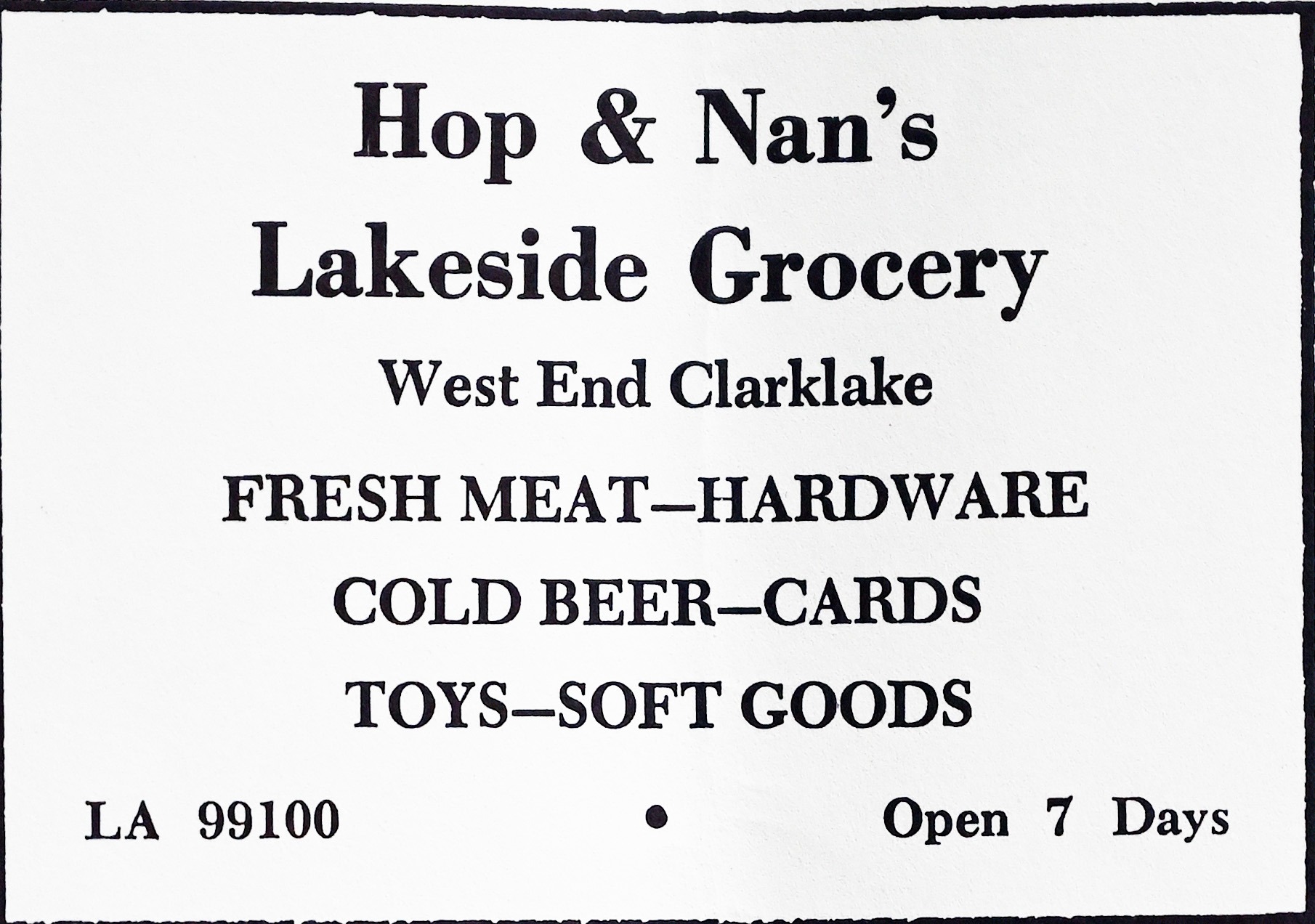
When the map was published, Lakeside Grocery was on the other side of Vining, next door. Here’s a 1947 photo.

You can see the current transformation of the same building in this recent photo.
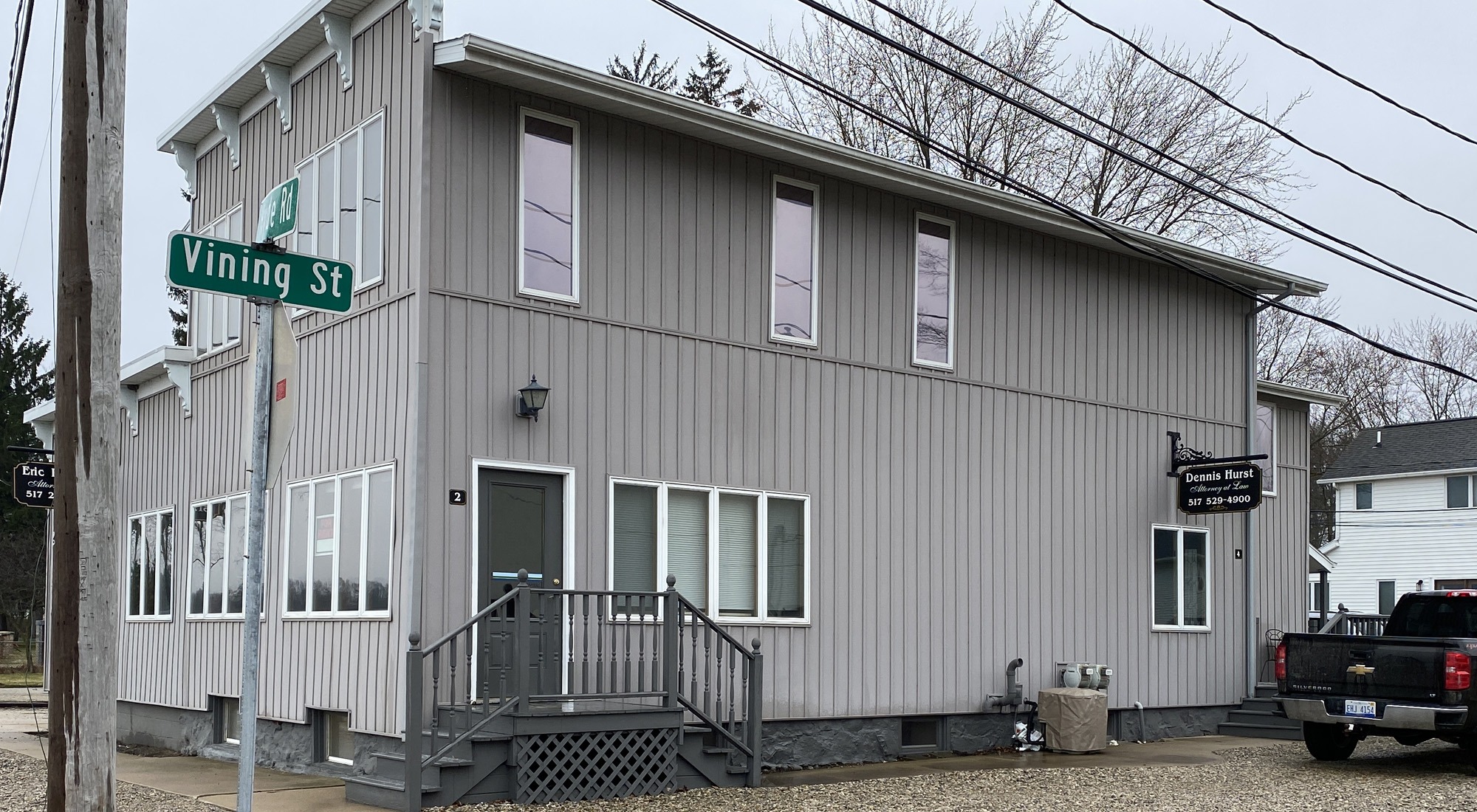
The building also served as a post office. A story is coming to this website soon that traces the history of the Clark Lake post office.

Notice the phone numbers in the ads and the heading. Some Clark Lake numbers began with LA 9 (LAkeside 9). When this map was published, Michigan Bell was assigning new Clark Lake numbers with the prefix 529. That, of course, is the same thing on the phone dial as LA9, but expressed only in numbers. For a while, the LA 9 numbers remained along side the all-number versions in phone books and in ads like these. Eventually Ma Bell converted all Clark Lake listings in the phone book to 529.
Like Clark Lake, Brooklyn numbers were listed two ways–either as LYric 2 or 592 during this period. Whether LY2 or 592, some people have wondered why Brooklyn and Clark Lake, adjacent to each other geographically, were assigned 592 and 529 respectively. Confusing? Just try having a number at Clark Lake which is duplicated at a Brooklyn business, and you’ll have your answer!
Of course, residential landlines are becoming extinct as people rely on cell phones only. But some remember a quirk with Clark Lake phone numbers in the past. If your phone number began with 529, you did not need to dial the 52 portion–just the last five digits as long as you were calling someone within the 529 exchange. And this was true for most other Jackson exchanges, as well. This affected the way people verbalized their phone number. To this day, some people will give their number as 52 (pause) 9xxxx instead of the more typical 529 (pause) xxxx.
Recently, a copy of the 1923 Rural Jackson County phonebook was found. At the time, some areas did not have phone numbers, but would be connected by going through the operator.

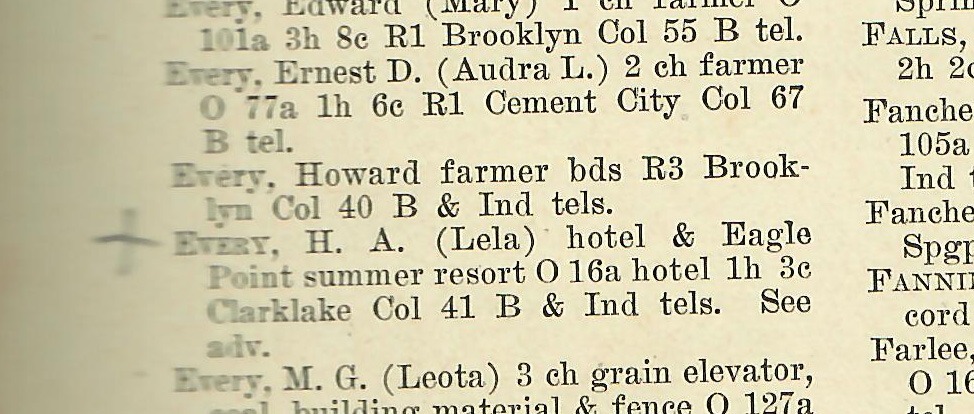
In the early days, phones were not common at the lake. Click here to read more about Clark Lake’s telephone system.











Loved the framed map, and the fascinating article with great photos and commentary. Well done! You never cease to please us with these great stories about our beloved Clark Lake area.
Wow. This brings back memories!!